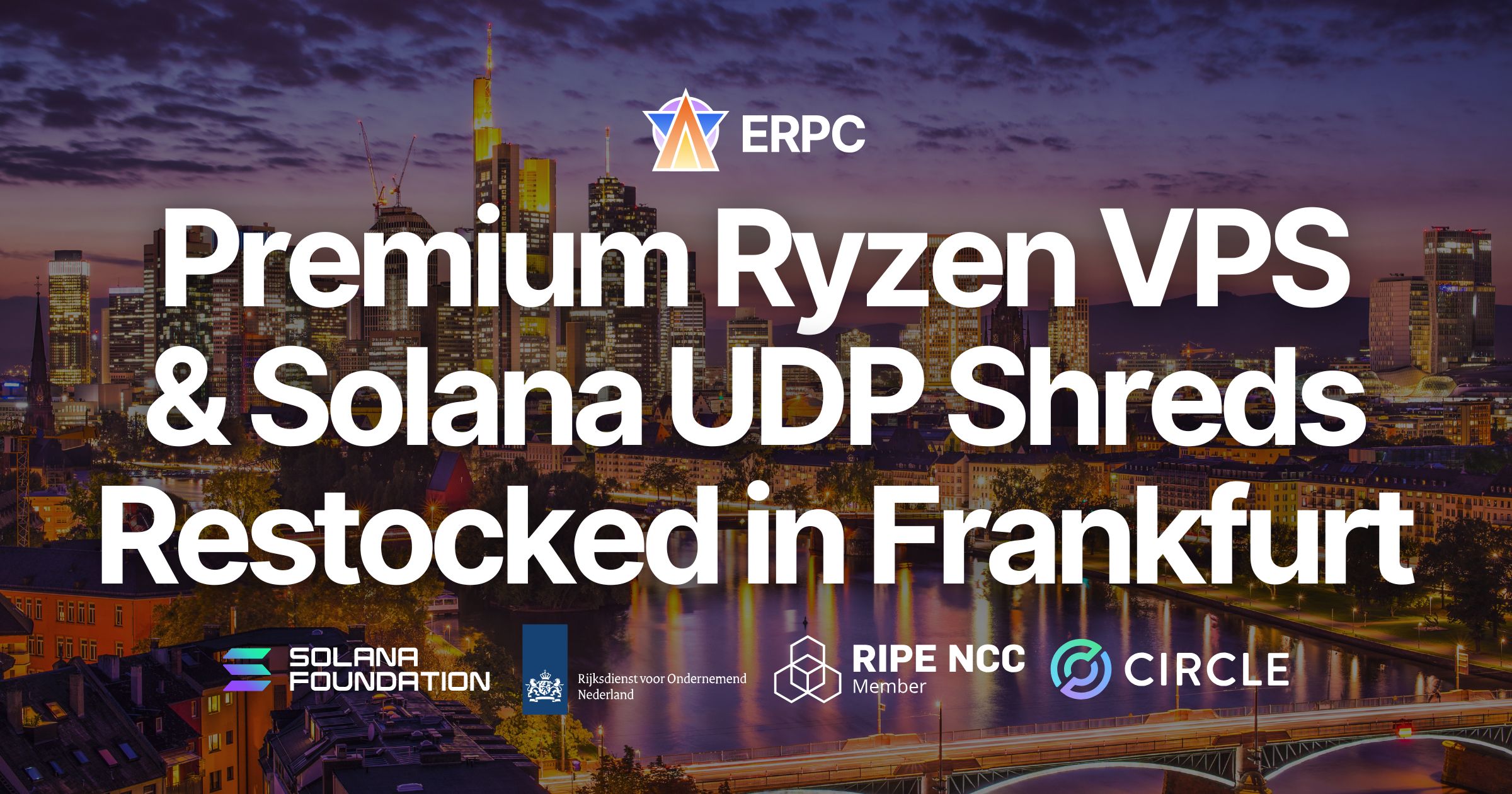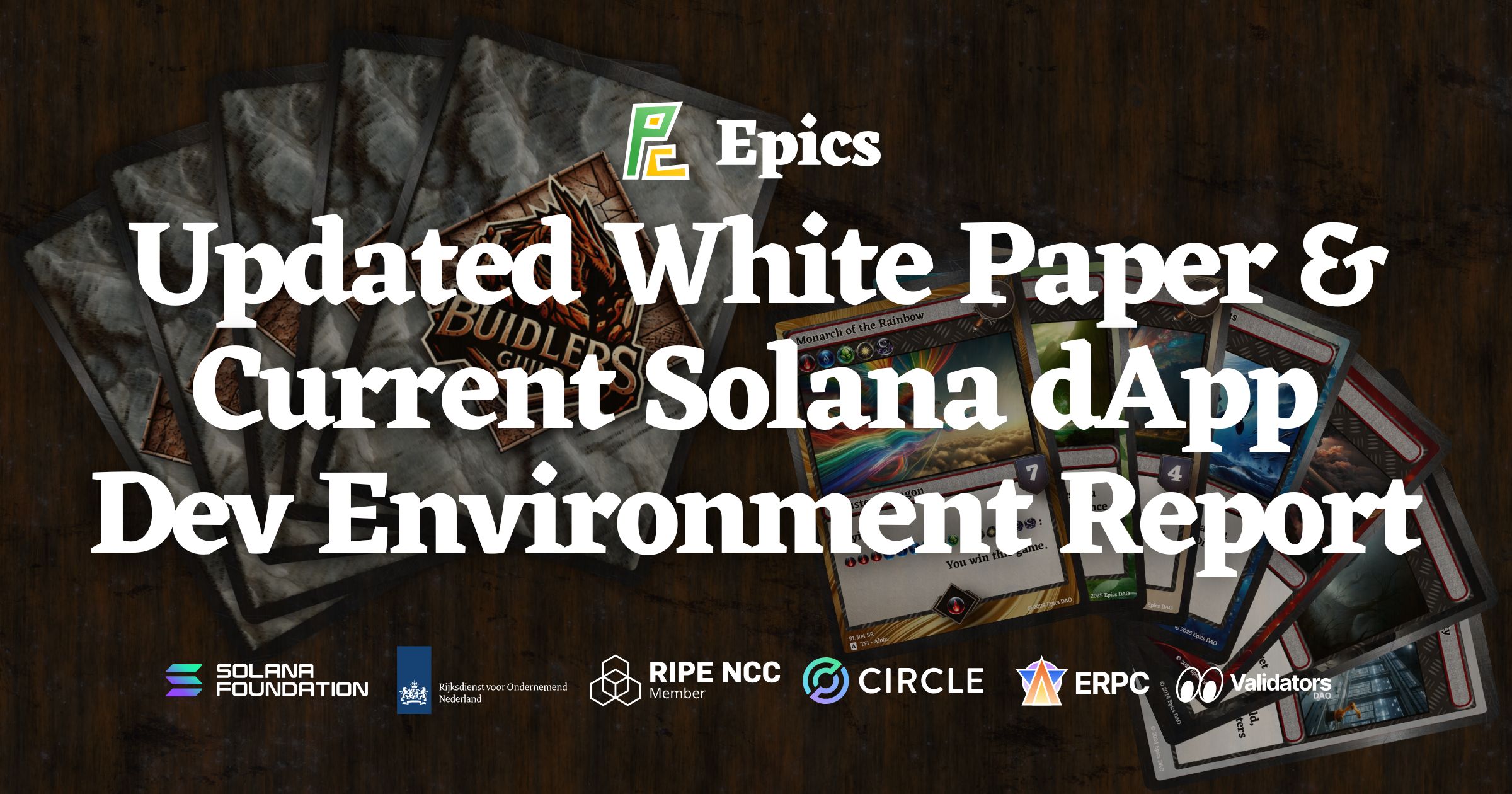ERPC Further Expands Solana Geyser gRPC Shared Endpoint in New York, Enhancing Peak-Time Stability and Throughput
ERPC Further Expands Solana Geyser gRPC Shared Endpoint in New York, Enhancing Peak-Time Stability and Throughput

ELSOUL LABO B.V. (Headquarters: Amsterdam, the Netherlands; CEO: Fumitake Kawasaki) and Validators DAO have announced an upgrade to ERPC’s Solana Geyser gRPC shared endpoint in the New York region.
With this upgrade, overall load distribution has been improved, enabling more stable communication even during peak traffic periods.
Background: Rising Demand and New York’s Strategic Role in Global Finance

New York is recognized as one of the world’s foremost financial centers, supported by a highly developed internet backbone.
In the world of trading and financial data processing, communication distance has extremely high value — differences in fiber length measured in mere centimeters can influence cost and speed, reflecting the precision demanded in this region.
In the world of trading and financial data processing, communication distance has extremely high value — differences in fiber length measured in mere centimeters can influence cost and speed, reflecting the precision demanded in this region.
In October 2025, a spot Solana ETF was officially approved and listed in the United States, further increasing global attention toward Solana-related projects and applications.
Alongside this development, access demand centered around New York has grown rapidly.
Alongside this development, access demand centered around New York has grown rapidly.
The Solana Foundation also maintains a presence in the city, and many of the world’s largest validators are concentrated along the U.S. East Coast.
To accommodate this growing demand, ERPC has added new Geyser gRPC nodes in the New York region, improving load balancing during both peak and normal operation.
As a result, response stability has increased and overall network throughput has improved.
To accommodate this growing demand, ERPC has added new Geyser gRPC nodes in the New York region, improving load balancing during both peak and normal operation.
As a result, response stability has increased and overall network throughput has improved.
Geyser gRPC Technical Features: Faster Synchronization with Shreds Integration

ERPC’s New York gRPC nodes operate within the same network as Jito Block Engine, enabling them to directly utilize Shreds data.
Compared with conventional Geyser gRPC streams that do not leverage Shreds, this setup achieves an average latency improvement of 80–100 ms.
Compared with conventional Geyser gRPC streams that do not leverage Shreds, this setup achieves an average latency improvement of 80–100 ms.
With the additional nodes, peak-time communication stability has further improved, ensuring consistent throughput even under high-load conditions.
Zero-Distance Configuration with Premium Ryzen VPS

ERPC’s gRPC nodes operate on the same network as the Premium Ryzen VPS infrastructure, allowing zero-distance communication without traversing the public internet.
The Premium Ryzen VPS lineup features 5.7 GHz Ryzen CPUs, ECC DDR5 memory, NVMe4 storage, and dual 25 Gbps network interfaces.
Although virtualized, all resources are physically dedicated, ensuring consistent performance with no overcommitment.
The Premium Ryzen VPS lineup features 5.7 GHz Ryzen CPUs, ECC DDR5 memory, NVMe4 storage, and dual 25 Gbps network interfaces.
Although virtualized, all resources are physically dedicated, ensuring consistent performance with no overcommitment.
This zero-distance configuration minimizes latency between application servers and gRPC endpoints, providing an optimal environment for real-time Solana workloads.
Solana RPC Bundle Plan

Many developers begin leveraging Solana’s real-time data through WebSocket or Geyser gRPC connections.
Because the data is already decoded, implementation is straightforward, well-documented, and low in learning cost.
Because the data is already decoded, implementation is straightforward, well-documented, and low in learning cost.
The Solana RPC Bundle integrates RPC and gRPC into a unified plan designed for seamless use from development to production.
It imposes no filter restrictions and supports Devnet, Testnet, and Mainnet environments alike.
This structure ensures production-level reliability and performance while keeping deployment costs manageable.
It imposes no filter restrictions and supports Devnet, Testnet, and Mainnet environments alike.
This structure ensures production-level reliability and performance while keeping deployment costs manageable.
Starting with RPC + gRPC provides a strong foundation for application development, allowing easy expansion into real-time processing or transaction-monitoring features.
For higher throughput requirements, upgrading to dedicated gRPC or Shredstream environments is also straightforward.
For higher throughput requirements, upgrading to dedicated gRPC or Shredstream environments is also straightforward.
For inquiries or migration assistance, please contact us via the Validators DAO official Discord:
- Validators DAO Official Discord: https://discord.gg/C7ZQSrCkYR
Future Outlook and Continuous Quality Improvements
ERPC has continually optimized and expanded its node infrastructure across major regions including Chicago, Amsterdam, and Frankfurt.
With the New York expansion, overall network load balancing and throughput stability have been further enhanced.
With the New York expansion, overall network load balancing and throughput stability have been further enhanced.
ERPC will continue leveraging the DoubleZero network to deliver ultra-low-latency connectivity and provide developers worldwide with reliable, high-quality Solana endpoints.
Challenges Addressed by ERPC and Validators DAO
- Transaction failures and latency fluctuations common in public RPC environments
- Performance throttling by general infrastructure providers
- Significant impact of network distance on communication quality
- Difficulty for smaller projects to access enterprise-grade infrastructure
Through the development of Epics DAO, an open-source Solana NFT card game project, we directly experienced the challenges of securing a reliable and high-performance Solana development environment.
In response, we built our own platform and now provide ERPC and SLV based on that technical foundation.
In response, we built our own platform and now provide ERPC and SLV based on that technical foundation.
Financial applications, in particular, demand mission-critical stability — even small delays or errors directly impact user experience.
Because Solana’s validator network is globally distributed and layered with Web3-specific architecture, achieving stable low-latency performance remains challenging for many developers.
Because Solana’s validator network is globally distributed and layered with Web3-specific architecture, achieving stable low-latency performance remains challenging for many developers.
Our mission is to deliver the high-performance infrastructure required to improve both the developer and user experience across the Solana ecosystem.
ERPC and SLV are integral parts of that mission.
ERPC and SLV are integral parts of that mission.
- ERPC Official Site: https://erpc.global/en
- SLV Official Site: https://slv.dev/en
- elSOL Official Site: https://elsol.app/en
- Epics DAO Official Site: https://epics.dev/en
- Validators DAO Official Discord: https://discord.gg/C7ZQSrCkYR



